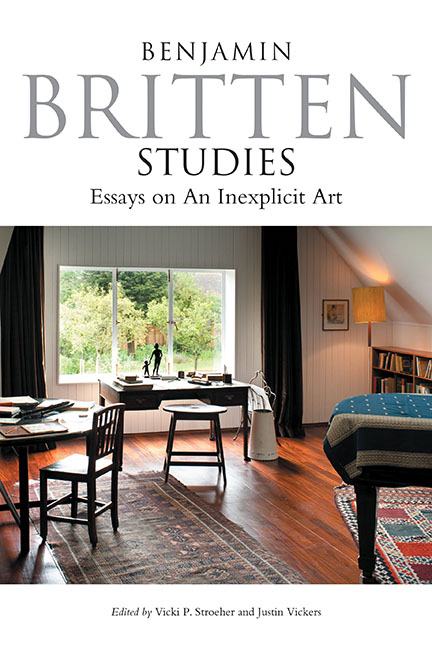Book contents
- Frontmatter
- Dedication
- Epigraph
- Contents
- List of Illustrations
- List of Musical Examples
- List of Tables
- Notes on Contributors
- Acknowledgements
- Bibliographic and General Abbreviations
- Editors’ Preface
- Introduction: Writing About Britten
- Part I Identity: Exile and Return
- Part II Britten and Intimacy
- Part III Britten and His Craft
- Part IV Britten and Matters of Practicality
- Conclusion and Epilogue
- 15 The Man Himself
- 16 Epilogue: Liminalities and Britten
- Works Cited
- Index
16 - Epilogue: Liminalities and Britten
from Conclusion and Epilogue
Published online by Cambridge University Press: 25 October 2017
- Frontmatter
- Dedication
- Epigraph
- Contents
- List of Illustrations
- List of Musical Examples
- List of Tables
- Notes on Contributors
- Acknowledgements
- Bibliographic and General Abbreviations
- Editors’ Preface
- Introduction: Writing About Britten
- Part I Identity: Exile and Return
- Part II Britten and Intimacy
- Part III Britten and His Craft
- Part IV Britten and Matters of Practicality
- Conclusion and Epilogue
- 15 The Man Himself
- 16 Epilogue: Liminalities and Britten
- Works Cited
- Index
Summary
Liminality, n. A transitional or indeterminate state between culturally defined stages of a person's life; spec. such a state occupied during a ritual or rite of passage, characterized by a sense of solidarity between participants.
VPS: In 1998 I received a generous grant from the University System of Georgia to conduct research in Britten's archive at Aldeburgh. I booked in for a three-week period, found a place to stay, and made the journey over, husband Mike and his trombone in tow. The whole trip had the feeling of a pilgrimage to a place I knew so well from Grimes. Aldeburgh was a sacred space, with the Britten-Pears Library – as it was then called – the holiest of holies. At Ipswich I saw a passing train car with a Britten image affixed to a square plaque. Even in my jet-lagged state, the excitement I felt was electric, for I was surely close to that sacred place. The journey from Ipswich to Saxmundham dragged on, as did what seemed an interminable taxi ride to our rented room in a bed and breakfast on Golf Lane. As we passed fields and houses, I tried to absorb as much of the landscape as I could because I had read so often how Britten fed his creativity from the Suffolk countryside. I saw the road marker to Snape – an auxiliary cathedral. And when the taxi drove past The Red House, I had finally come to my mecca. This is where Britten was, where he had lived and composed and loved. And when I made the trek to the sea to sit on the shingle and listen in quiet reflection, Moot Hall in my sights, I felt I understood Peter Grimes in its entirety for the very first time. The sound of the clacking of the shingle, the inevitability of the waves and tide, and the cries of the gulls: these were in Britten's music, which I so wanted to understand.
The library and its environs were indeed ritualized space – of the kind that only insiders were allowed to traverse. Readers who were not among the sanctified few could go in the reading room and adjoining hall, but not into the library itself. The Red House and grounds were completely off limits. But the reading room held the promise of riches untold.
- Type
- Chapter
- Information
- Benjamin Britten Studies: Essays on An Inexplicit Art , pp. 459 - 464Publisher: Boydell & BrewerPrint publication year: 2017

